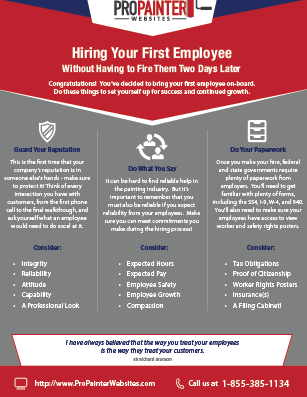Find Out Just How Seasonal Elements Affect Industrial External Paint Success And Uncover The Very Best Times To Make Certain Lasting Outcomes For Your Task
Find Out Just How Seasonal Elements Affect Industrial External Paint Success And Uncover The Very Best Times To Make Certain Lasting Outcomes For Your Task
Blog Article
Author-Aguilar Whalen
When you're planning an industrial exterior paint task, seasonal variables can make or break your results. You'll want to think about how temperature and moisture effect paint application and drying times. Choosing the right season can ensure your paint sticks appropriately and lasts longer. However which seasons are really the most effective for this type of job? Allow's explore the key elements that can impact your job's success.
The Influence of Temperature on Paint Application
When you're intending a business external painting job, the temperature can dramatically impact just how well the paint sticks and dries out.
Preferably, you wish to paint when temperature levels range in between 50 ° F and 85 ° F. If it's also chilly, the paint may not treat properly, bring about problems like peeling off or fracturing.
On the other side, if it's also hot, the paint can dry out as well promptly, avoiding proper attachment and leading to an uneven finish.
You need to also take into consideration the time of day; morning or late afternoon offers cooler temperature levels, which can be much more favorable.
Constantly examine the maker's referrals for the details paint you're utilizing, as they usually give guidance on the ideal temperature level variety for ideal outcomes.
Humidity and Its Result on Drying Times
Temperature isn't the only ecological element that affects your business outside paint job; humidity plays a significant function as well. High humidity degrees can reduce drying out times substantially, affecting the overall quality of your paint job.
When the air is filled with moisture, the paint takes longer to treat, which can lead to issues like bad bond and a greater danger of mold growth. If just click the next website page on an especially humid day, be gotten ready for extended wait times in between layers.
It's crucial to keep track of local weather conditions and strategy accordingly. Preferably, go for humidity levels between 40% and 70% for optimal drying.
Keeping these consider mind ensures your job stays on track and supplies a long lasting coating.
Best Seasons for Commercial Exterior Paint Projects
What's the best season for your commercial exterior paint projects?
Spring and very early autumn are normally your best options. During these periods, temperatures are light, and humidity degrees are usually lower, producing excellent problems for paint application and drying out.
Avoid summertime's intense heat, which can cause paint to completely dry as well quickly, bring about bad adhesion and surface. Similarly, wintertime's cool temperatures can hinder appropriate drying and curing, risking the long life of your paint task.
Go for days with temperature levels in between 50 ° F and 85 ° F for ideal results. Bear in mind to check the local weather report for rain, as damp conditions can ruin your task.
Preparation around these elements ensures your paint task runs efficiently and lasts longer.
Verdict
In conclusion, planning your industrial outside painting tasks around seasonal considerations can make a considerable distinction in the outcome. By scheduling work throughout the excellent temperatures and humidity levels, you'll make sure better adhesion and drying out times. Remember to keep an eye on regional weather report and select the correct time of year-- spring and early loss are your best options. Taking click this link here now will help you attain a durable and professional finish that lasts.
